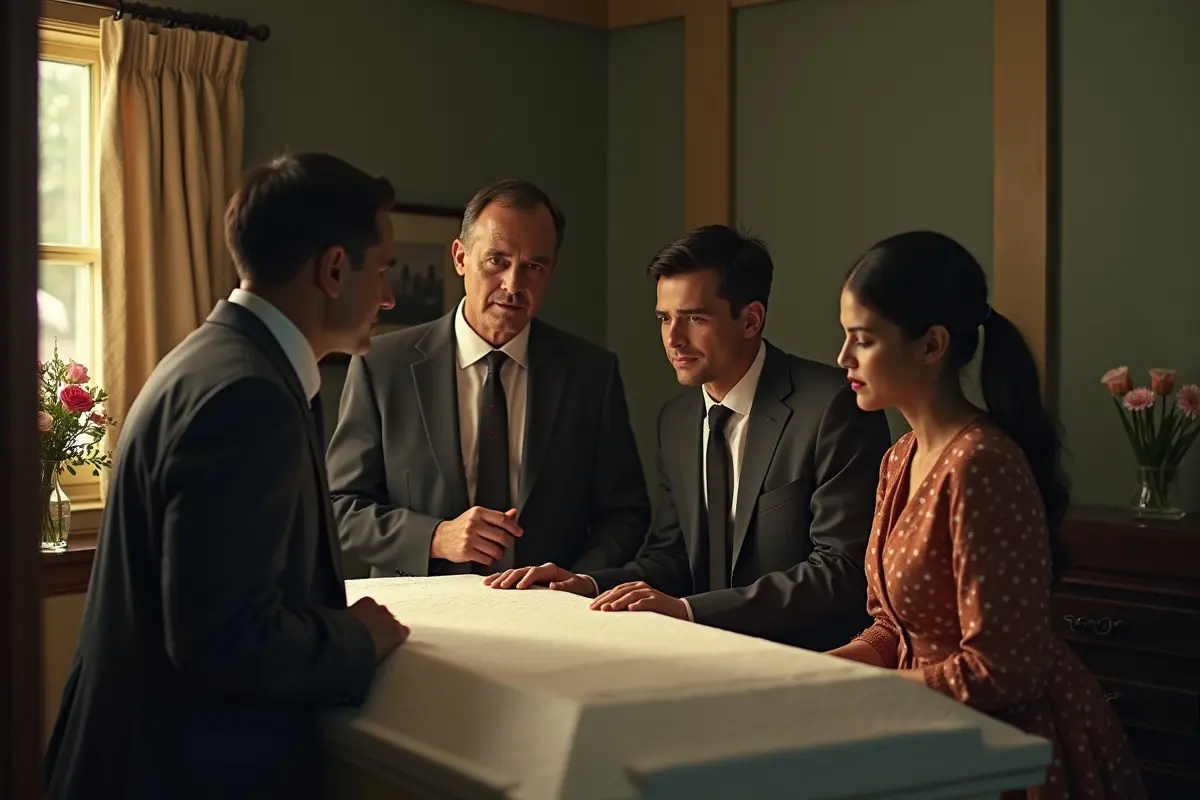Arranging a funeral is one of those tasks that no one looks forward to, but at some point, we all might find ourselves facing it. Whether you’re planning for a loved one or thinking ahead for yourself, it’s a process that carries a lot of weight—emotionally, financially, and logistically. But while it might seem daunting, knowing what to expect can help you navigate through it with a bit more ease.
The First Steps: What Needs to Happen First
When someone passes away, there are a few immediate tasks that need attention. These might be some of the hardest moments, but having a clear idea of what to do can bring some comfort.
- Notify the right people – This includes family, close friends, and any other important contacts. If the person was under medical care, a doctor needs to be notified to officially declare the death.
- Decide on organ donation – If the deceased wanted to donate organs, this needs to be done quickly. The hospital or medical facility will guide you through this.
- Contact a funeral home – This is your next big step. A funeral home will help transport the body and begin the process of arranging the funeral.
Choosing a Quality Funeral Home
Selecting the right funeral home is crucial. Check out https://www.sorensenfuneralhome.com/ for an example of the sort of funeral home you should be looking for. This isn’t just about finding a place that handles logistics; it’s about choosing a team that will respect your loved one’s memory and guide you through the process with compassion. Here’s what to look for:
- Reputation and Reviews – Check online reviews, ask for recommendations, and do your research. A good funeral home will have a strong reputation for professionalism and care.
- Services Offered – Not all funeral homes offer the same services. Make sure they provide what you need, whether it’s traditional burial, cremation, or something more personalized.
- Transparency in Pricing – Funeral costs can add up quickly. Choose a funeral home that’s upfront about their pricing and doesn’t push you toward expensive packages you don’t need.
- Personal Connection – You should feel comfortable and supported by the staff. This is a time when kindness and empathy are paramount.
Understanding the Types of Funerals
Funerals are as unique as the people they honor. From the type of service to the final resting place, you have several options to consider.
Traditional Funeral Service
This is the most common type of funeral. It usually includes a viewing or visitation, a formal service, and then a burial at a cemetery. These services can be religious or secular, depending on the beliefs of the deceased and their family.
Cremation
Cremation has become increasingly popular in recent years. The body is cremated, and the ashes can be kept in an urn, scattered, or buried. Some people opt for a memorial service either before or after the cremation.
Green Funerals
For those who are environmentally conscious, a green funeral might be the way to go. This involves burial in a biodegradable casket with minimal impact on the environment. No embalming fluids are used, and the body is allowed to decompose naturally.
Memorial Services
A memorial service differs from a traditional funeral in that the body is not present. These services can be held at any time, even weeks or months after the person has passed away, which can provide more flexibility in planning.
The Costs Involved: Budgeting for a Funeral
Funerals can be expensive, and costs can vary widely depending on the choices you make. Here’s a breakdown of typical expenses:
- Funeral Home Fees – This covers basic services, transportation of the body, and the use of the facility for viewings and services.
- Casket or Urn – Caskets can range from a few hundred to several thousand dollars, depending on the material and craftsmanship. Urns also come in a wide range of prices.
- Burial Plot or Niche – If you’re opting for burial, you’ll need to purchase a plot in a cemetery. If choosing cremation, a niche in a columbarium is an option.
- Headstone or Marker – The cost of a headstone varies based on the material, size, and design. Simple markers are less expensive, while larger, more intricate headstones cost more.
- Flowers, Obituaries, and Other Personal Touches – These are often overlooked but can add to the overall cost. Make sure to budget for these if they’re important to you.
The Emotional Side of Funeral Planning
Let’s face it, planning a funeral is emotionally exhausting. You’re dealing with grief while also trying to make decisions and arrangements. It’s okay to ask for help during this time. Lean on family and friends, or consider talking to a grief counselor. Many funeral homes also offer resources for emotional support.
Personalizing the Funeral
One of the most beautiful aspects of planning a funeral is the opportunity to personalize it. Whether it’s through the music, the readings, or the overall vibe of the service, there are countless ways to honor your loved one’s unique personality and life. Here are a few ideas:
- Music and Readings – Choose songs, poems, or passages that were meaningful to the deceased. This can create a powerful emotional connection for everyone attending.
- Memory Tables or Displays – Create a display of photos, mementos, and other items that tell the story of your loved one’s life.
- Unique Venues – While churches and funeral homes are traditional venues, you can consider other meaningful locations, such as a park, a beach, or even your own home.
Taking the Next Step
Arranging a funeral is a deeply personal journey. It’s a time to honor a life lived, to say goodbye, and to find comfort in shared memories. By understanding what to expect and taking things step by step, you can navigate the process with confidence, compassion, and a little bit of grace.





Leave a Reply
You must be logged in to post a comment.